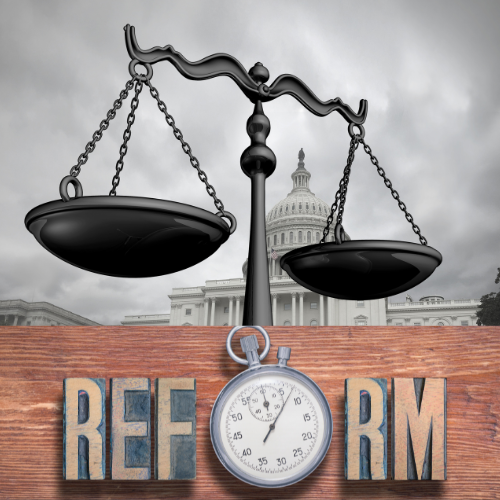Flood Insurance Fundamentals: Part 2

Buckle Up, Buttercup, It’s Go-Time!
Flood Insurance Fundamentals Part 2: The second instalment of the Flood Insurance Fundamentals series which is intended to be a comprehensive look at FEMA’s National Flood Insurance Program (NFIP)
In Part 1 We Established
- The SFIP purpose
- Important definitions
- Who is at risk for flooding
- The difference between SFHAs and NSFHAs
- FIRMs
- How NFIP flood insurance is purchased
- Who can and who should purchase NFIP Insurance
- Who is required to purchase NFIP insurance
- The definition of a participating community
- Where to view participating community status
- What a designated loan is
- The advantages of NFIP flood insurance over disaster assistance
- The limits of NFIP insurance Emergency & Regular plans
- Effective date & 30 day waiting period
If you are unfamiliar with anything in that list you may want to review Part 1 before proceeding with Part 2
With your solid understanding of the foundational elements of the NFIP covered in Part 1, we can now delve deeper into how FEMA differentiates between Pre-FIRM and Post-FIRM properties
Pre-FIRM vs Post-FIRM

Back in the Day to Today’s Way
The National Flood Insurance Program (NFIP) draws a distinction between Pre and Post-FIRM buildings because there is a direct impact on flood insurance rates, building compliance requirements, and flood risk management strategies
Pre-FIRM buildings were constructed before modern floodplain regulations were in place and are considered to be at higher risk for flood damage
The NFIP defines a Flood Insurance Rate Map (FIRM) as an official map created by the Federal Emergency Management Agency (FEMA) that identifies flood hazard areas and risk premium zones within a community
FIRMs are used for floodplain management, insurance purposes, and mitigation planning
FIRM History
The first Flood Insurance Rate Maps (FIRMs) were issued by FEMA in the early 1970s, following the establishment of the National Flood Insurance Program (NFIP) in 1968
FIRMs became an important tool for identifying flood risk areas and implementing floodplain management regulations
The issuance of these maps was accelerated after the Flood Disaster Protection Act of 1973, which mandated flood insurance for properties in high-risk areas with federally backed mortgages
Specific communities received their initial FIRMs at different times, most of which were introduced in the mid-1970s
December 31, 1974
The date December 31, 1974, is significant in the context of the National Flood Insurance Program (NFIP) because it serves as a benchmark for identifying Pre-FIRM buildings
This date was chosen because it predates the widespread implementation of FIRMs and floodplain management regulations
Buildings constructed before this date were typically not designed with flood risks in mind, as detailed flood hazard data and building codes to mitigate flood damage were not yet established
The Difference
A Pre-FIRM building as a structure for which construction or substantial improvement occurred before December 31, 1974, or on or before the effective date of the community’s first Flood Insurance Rate Map (FIRM), whichever is later
A Post-FIRM building as a structure for which construction or substantial improvement began after December 31, 1974, or on or after the effective date of the community’s first Flood Insurance Rate Map (FIRM), whichever is later
To find the status of your community and determine when the first FIRM was made available to your community you can go here: https://www.fema.gov/flood-insurance/work-with-nfip/community-status-book
Comprehending the distinction between Pre-FIRM and Post-FIRM buildings is important for understanding how flood insurance rates and compliance requirements are determined
These classifications also play a significant role in how communities participate in the NFIP’s Emergency and Regular Insurance Programs
NFIP’s Regular & Emergency Insurance Programs

Worlds Apart
The NFIP offers two distant insurance programs to participating communities:
- Emergency Program: The initial participating phase offers a limited amount of coverage and utilizes a Flood Hazard Boundary Map (FHBM)
- Regular Program: The final phase of participation offers full limits of coverage and uses a Flood Insurance Rate Map (FIRM)
Each program relies on a specific type of flood map to assess risk and guide decisions which we explore below
FHBM vs FIRM

Feeling vs Fact
The Emergency Program phase creates the FHBM as a preliminary map to provide a general understanding of flood risks. This map does not include the Base Flood Elevation (BFE)
The Regular Program phase uses the FIRM as a more advanced and detailed map to guide insurance, planning, and regulatory decisions. This map includes the Base Flood Elevation (BFE)
| Attribute | (FHBM) | (FIRM) |
|---|---|---|
| Purpose | Provides approximate flood hazard data to identify general flood-prone areas | Offers detailed flood risk information, including flood zones, Base Flood Elevations (BFEs), and floodways |
| Phase of Use | Used during the initial Emergency Program phase of the NFIP | Used during the Regular Program phase of the NFIP after more detailed studies are conducted |
| Data Accuracy | Based on approximate data and historical flood records; lacks detailed hydrological analysis | Based on comprehensive Flood Insurance Studies (FIS), including hydrological and hydraulic analyses |
| Features Shown | Identifies general Special Flood Hazard Areas (SFHAs) without specific elevation or risk details | Displays SFHAs, BFEs, flood zones (e.g., A, V), and other critical details for floodplain management |
| Regulatory Use | Helps communities adopt basic floodplain management regulations to qualify for NFIP participation | Used for setting insurance rates, enforcing floodplain management regulations, and guiding development |
| Replacement | Eventually replaced by FIRMs once detailed studies are completed for a community | Becomes the official map for flood risk determination in participating NFIP communities |
The insurance limits in the NFIP’s Emergency Program and Regular Program, as discussed in Part 1, are directly tied to the level of risk knowledge available, as reflected in the mapping and data used in each phase
Base Flood Elevations (BFEs) are generally not known when using a Flood Hazard Boundary Map (FHBM). FIRMs are the official tools used to display BFEs and other flood risk data for specific areas
Base Flood Elevations

100 Year Flood Anyone?
The Base Flood Elevation (BFE) represents the computed height to which floodwaters are expected to rise during a base flood—a flood with a 1% chance of occurring in any given year (commonly referred to as the 100-year flood
A Base Flood Elevation (BFE) is not available on all FEMA Flood Insurance Rate Maps (FIRMs)
BFEs are typically shown on FIRMs for zones where detailed hydraulic analyses have been conducted. Properties with their first floor below the BFE are at higher risk of flooding
First Floor Height

Every Inch Counts!
The National Flood Insurance Program (NFIP) defines First Floor Height (FFH) as the height of a building’s lowest finished floor above the Lowest Adjacent Grade (LAG) measured in feet and excluding areas such as garages or enclosures not intended for habitation
Buildings that are higher off the ground have a lower flood risk
There are Two Ways to Determine the First Floor Height for a building
- System-Generated FFH: FEMA uses datasets, application details, and informed assumptions to estimate FFH automatically
- Elevation Certificate (EC): Property owners may provide an EC with precise elevation data to refine the FFH measurement and potentially lower insurance premium
The NFIP uses FFH to assess how a building’s elevation compares to the Base Flood Elevation (BFE)
Buildings with higher FFH relative to BFE generally incur lower flood insurance costs, while those below the BFE face higher premiums due to increased flood risk
Other Rules to Know

They’re Not Just Random Facts
NFIP Policy Term
All National Flood Insurance Program (NFIP) policies have a term of one year
Policies can be purchased either through a Write-Your-Own (WYO) insurance company or directly through an insurance agent
Regardless of the purchase method, the premium cost will remain the same
For a Lender
Evidence of flood insurance typically includes specific documentation to ensure compliance with flood insurance requirements and to protect the lender’s interest in the collateral
- Flood Insurance Application and Proof of Premium Payment: A copy of the completed flood insurance application, along with proof that the premium has been paid in full, is sufficient evidence for closing a loan.
- Declarations Page: A finalized declarations page from the insurance policy is another acceptable form of evidence.
- No Binders Accepted: Insurance binders are not accepted as evidence of flood insurance for loans secured by properties in Special Flood Hazard Areas (SFHAs).
Community Participation
Community participation in the National Flood Insurance Program (NFIP) is a voluntary process, but it carries significant implications for both the community and its residents
Consequences of Non-Participation
- Communities that do not join within one year of being identified as flood-prone are ineligible for federal disaster assistance and federally-backed loans for properties in Special Flood Hazard Areas (SFHAs)
Example
If Miles City, MT did not participate in the National Flood Insurance Program (NFIP), the consequences would be significant for disaster assistance, home loans, and community resilience
- No Federal Disaster Assistance for Floods: Without NFIP participation, federal disaster assistance would not be available for flood-related damages.
- However, assistance for other disasters (e.g., fire) could still be provided, as it is not tied to NFIP participation.
- Federally-Backed Loans Restricted in SFHAs: Federally-backed loans (e.g., FHA, VA, USDA) would not be available for properties in Special Flood Hazard Areas (SFHAs).
- Since 77% of Miles City is within the floodplain, this restriction would severely limit home-buying and refinancing options for most of the city.
- Economic Impacts on Property Owners: Without access to federally-backed flood insurance, residents and businesses would need to seek private insurance (often more expensive) or risk being uninsured.
- This could lead to significant financial strain in the event of a flood.
- Community Vulnerability: The lack of federal support for flood mitigation projects and insurance would leave the city more vulnerable to recurring floods, particularly given its history of ice-jam flooding and its location at the confluence of two rivers
Consequences of Suspension from the NFIP
Suspension from the NFIP means that residents of the affected community cannot purchase or renew flood insurance through the program, and existing policies are canceled at renewal
Federal disaster assistance: Grants, loans, and federally-backed mortgages for properties in Special Flood Hazard Areas (SFHAs) become unavailable, significantly impacting property values and economic activity in the community
Causes
- Failure to adopt or enforce compliant floodplain management measures.
- Repealing or weakening previously compliant regulations
Effects
- No new flood insurance policies can be purchased, and existing policies cannot be renewed.
- Federal disaster assistance, grants, and loans are no longer available for properties in SFHAs.
- Federally-backed mortgages are unavailable for properties in SFHAs
Annual Premium Rate Increases – Statutory Cap

Here We Go Again
In addition to understanding the rules and requirements for NFIP policies, it is important to consider how premium rates are adjusted over time
While NFIP premiums are designed to reflect flood risk, federal law imposes statutory caps on annual premium increases to ensure gradual adjustments and address affordability concerns
18% vs 25%
The statutory cap on annual premium rate increases under the Homeowner Flood Insurance Affordability Act (HFIAA) limits individual NFIP policy premium increases to 18% per year for most properties, including primary residences
This cap includes the Reserve Fund Assessment but excludes additional charges like the HFIAA surcharge ($25 for primary residences and $250 for non-primary residences) and the Federal Policy Fee
Property types, such as non-primary residences, business properties, severe repetitive loss properties, and substantially damaged or substantially improved structures in Special Flood Hazard Areas (SFHAs), are subject to 25% annual premium increases until they reach their full risk-based rates
These higher increases reflect FEMA’s goal of aligning premiums with actuarial risk for properties with elevated flood vulnerabilities
Background on Reform Legislation

Jumping Into the Deep End
Pre-FIRM (Pre-Flood Insurance Rate Map) properties, as noted earlier, are buildings built before FEMA created Flood Insurance Rate Maps (FIRMs) and established modern floodplain management regulations
These properties were historically granted subsidized flood insurance rates to encourage program participation and avoid penalizing property owners who built before flood risks were formally identified
That changed with the Biggert-Waters Flood Insurance Reform Act of 2012
Impact of the Biggert-Waters Act of 2012 (BW-12)
The Biggert-Waters Flood Insurance Reform Act of 2012 aimed to phase out subsidies for certain pre-FIRM properties to improve the financial stability of the NFIP
- Non-primary residences, business properties, severe repetitive loss properties, and substantially damaged or improved structures in SFHAs began seeing 25% annual premium increases starting January 1, 2013, upon renewal, until they reach full risk-based rates.
- This reform sought to align premiums with actual flood risk, reflecting the higher vulnerability of these properties
Definition of Non-Primary Residences
A non-primary residence is defined as a single-family dwelling, condominium unit, apartment unit, or cooperative unit that the policyholder or their spouse does not occupy for more than 50% of the year
Policyholders can have multiple primary residences but must provide supporting documentation for each
HFIAA Adjustments in 2014
The Homeowner Flood Insurance Affordability Act (HFIAA) of 2014 modified some aspects of BW-12 to address affordability concerns
- For primary residences, annual increases were capped at 18%, but non-primary residences and other high-risk property types continued to face 25% annual increases.
- HFIAA also introduced a surcharge ($25 for primary residences and $250 for non-primary residences and businesses), which is not included in the statutory cap
Ongoing Effects
- The phase-out of subsidies has significant implications:
- Financial Burden on Property Owners: Owners of non-primary residences and other high-risk properties face steep premium increases, potentially making flood insurance unaffordable.
- Market Impacts: Higher premiums can reduce property values and discourage investment in older structures in SFHAs.
- Incentives for Mitigation: The reforms encourage property owners to undertake flood mitigation measures (e.g., elevating structures) to reduce premiums



Leave a Reply